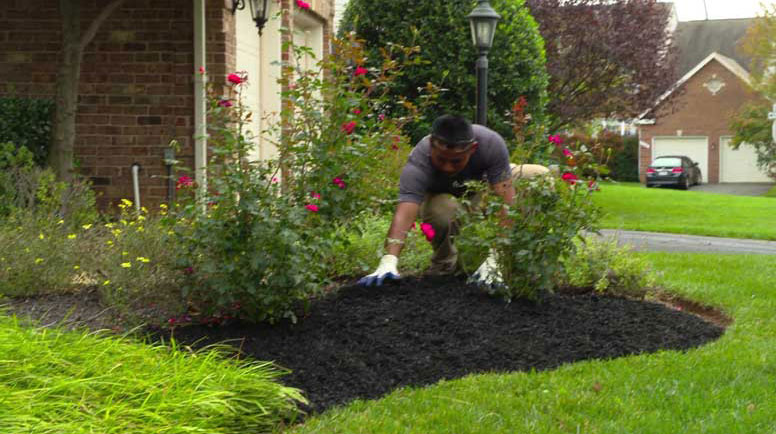5 Good Reasons Why Fall Lawn Care Might Include Compost
Remember when you last ordered a soil test for the lawn? If it showed that organic matter was low or medium (less than four to five percent), your lawn’s future may be less than optimal. Healthy lawn soil has between five to eight percent organic matter.
Compost applications can improve the level of organic matter in soil. The usual recommendation is to apply one-half inch. (Want to know how many yards of compost you need?
Compost can be applied spring or fall, but fall is usually the best time for the lawn care. Here are five reasons why:
- Fall and winter weather work the compost into soil passively, especially in rainy or snowy climates. It’s less work for you and less soil disturbance. If you recently aerated the lawn works (another good fall practice), compost is absorbed faster. Many turf pros aerate after applying compost.
- Fall compost applications help decompose thatch, the dead grass roots that accumulate on the soil surface during the growing season.
- Compost provides food for beneficial soil microbes that may remain active well past the apparent end of the growing season. Fall-applied compost also nourishes soil microbes in early spring as they become active.
- Fall-applied compost can help overcome soil compaction, one of the top deterrents to a successful lawn. How do you know if soil is compacted? If you can’t sink a shovel deeper than three inches, the soil is likely to be too dense for healthy lawn growth. If water puddles in a section, the soil is probably compact.
Spring-applied compost has some drawbacks. One is that it can be an invitation for grubs. Because the freshly placed compost is likely to hold moisture, it can attract female beetles during the egg-laying period. Female beetles, particularly Louisville Landscaping beetles, prefer to lay eggs on moist areas.

How to Buy Compost
- If you are making a bulk purchase from a local Louisville Lawn Care provider, you might look for one who uses the US Composting Council’s Seal of Testing Assurance (STA).
- Learn more about the how to buy good compost at USCC’s Buy Compost. Find a list of STA participants by state.
- Use finished compost that has been properly heated and turned for a sufficient period of time. Avoid compost that uses old building materials.
- If any of the compost inputs are animal-derived, such as manure, blood meal, bone meal or feathers, the compost should be sufficiently aged. In organic farming, the recommendation is usually six months or more.
- Municipal sewage compost, while widely available, is not considered compatible with organic land care and food production standards.
Test Compost for Finish
If you are making your own compost, here are two D-I-Y tests for finish:
- Put three cups of compost in a sealed plastic bag. Let it stand overnight at room temperature. If the bag has expanded when you check in the morning, the compost is unfinished. Turn the pile and test again in a few weeks.
- Here’s another test for finish: Fill a planting pot with the compost and try to germinate watercress seeds. If there is no germination or the seedlings are very weak, the compost needs further work.
Test Compost for Herbicides
According to the Louisville Lawn Care Compost from grass clippings or cow manure can have persistent herbicides.
Most professionals test for this, but here’s a D-I-Y test for persistent herbicides in compost:
- Fill a pot with the compost. Add seeds of red clover (Trifolium pratense) or use regular garden beans. Failure to grow is a good indicator of persistent herbicides.
The fall season is a great time to improve lawn soil by applying compost.